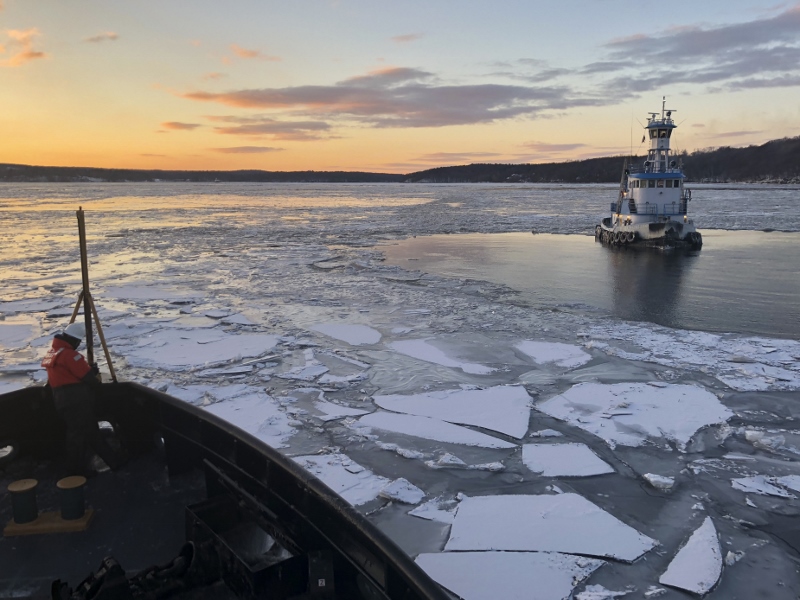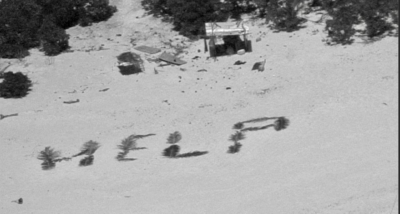The ice has arrived, and Coast Guard icebreakers were hard at it as 2017 ended and 2018 began.
On New York’s Hudson River, the 140' icebreaking tug Penobscot Bay has been churning ice on the upper river, a major conduit for the region’s heating oil supplies. About 90% of home heating fuel used in the Northeast is transported by barge, according to the Coast Guard.
On Sunday evening the Penobscot Bay freed the 105x39’ tugboat Brooklyn near Saugerties, N.Y., which got stuck after becoming disabled en route to Albany. After the tug was out of the ice, the Coast Guard cutter Hawser, a 65’ harbor tug, escorted the Brooklyn to its destination.
Next was the 85’x27’x9’, 3,200-hp tug Stephanie Dann, stuck Tuesday morning near Kingston, N.Y. After a full night in the ice the Penobscot Bay got there, and cleared a path for the tug.
Coast Guard ice-breaking tugs based at Saugerties and Bayonne, N.J., are positioned along the river and assisting vessels transiting areas of thick ice.
Another 140’ cutter, the Sturgeon Bay, is working farther south on the Hudson. It is all part of the Coast Guard’s region-wide program called Operation Reliable Energy for Northeast Winters or Operation RENEW.
That barged oil is being burned fast now. After a week when temperatures barely budged out of the teens in parts of the mid-Atlantic, and descended to -10 degrees in Maine, another blast is coming in what forecaster Joe Bastardi at WeatherBELL Analytics dubbed “Arcticgeddon.”
A storm forecasted off the East Coast Jan. 4 will bring gale force wind and snow, perhaps as far south as Jacksonville, Fla. On the heels of that system, forecasters predict another pool of cold from the top of the world surging south into the U.S. Friday and Saturday.
Up on the Great Lakes, the Coast Guard started breaking ice around 8 a.m. New Year’s Day for ships arriving at Green Bay, Wis. The annual icebreaking program, named Operation Taconite for the region’s iron ore, is ramping up for the first three weeks of January. Winter is tough on the Great Lakes, not just for mariners but for the region’s economy, which took a hit during heavy ice seasons in 2013 to 2015.
Coast Guard officials say icebreakers will maintain tracks through the ice from Rock Island Passage to the Fox River, including Marinette-Menominee and Sturgeon Bay. The initial outbreak of Arctic air brought Great Lakes icebreakers their first customers right after Christmas, when a Coast Guard crew and Canadian colleagues freed up two ships in the Saint Marys River.
The 140’ Coast Guard icebreaking tug Biscayne Bay broke out the 1,000’x105’x35’ self-loading bulk carrier Walter J. McCarthy in the upbound Middle Neebish Channel between Wisconsin and Ontario after it was stuck in the ice Dec. 27. The 228’ Canadian coast guard buoy tender and icebreaker Samuel Risley came to the rescue of the 1,004’x105’x32’ bulk carrier Edgar B. Speer, which got stuck near Sawmill Point on the downbound side. A waterway restriction imposed until the ships could be freed stacked up 12 others in the river before the icebreakers did their work.
So it looks like a busy season. Stay warm out there.





